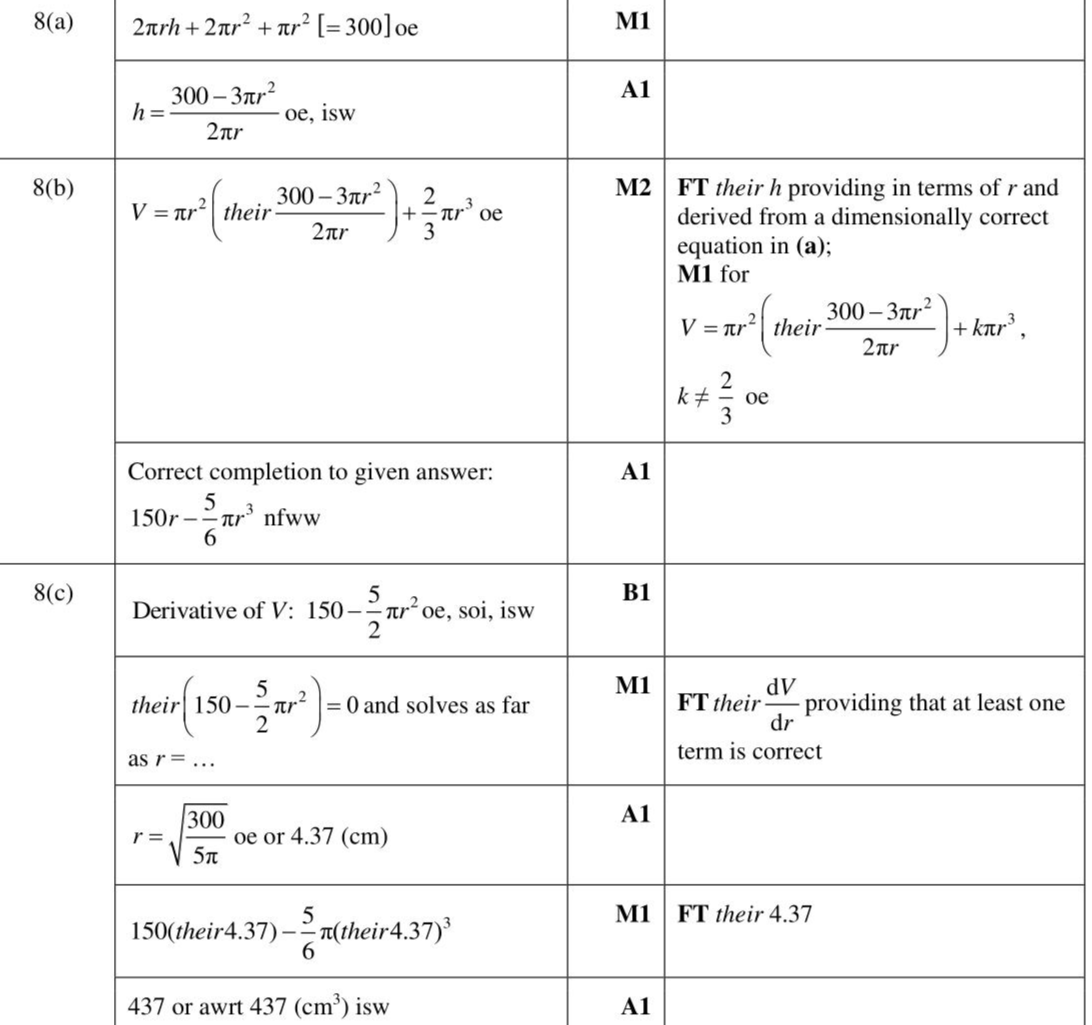In this question all lengths are in centimetres. The volume of a cylinder with radius $$\(r\)$$ and height $$\(h\)$$ is $$\(\pi r^{2} h\)$$ and its curved surface area is $$\(2 \pi r h\)$$. The volume of a sphere with radius $$\(r\)$$ is $$\(\frac{4}{3} \pi r^{3}\)$$ and its surface area is $$\(4 \pi r^{2}\)$$. The diagram shows a solid object in the shape of a cylinder of base radius $$\(r\)$$ and height $$\(h\)$$, with a hemisphere of radius $$\(r\)$$ on top. The total surface area of the object is $$\(300 \mathrm{~cm}^{2}\)$$. (a) Find an expression for $$\(h\)$$ in terms of $$\(r\)$$. (b) Show that the volume, $$\(V\)$$, of the object is $$\(150 r-\frac{5}{6} \pi r^{3}\)$$. (c) Find the maximum volume of the object as $$\(r\)$$ varies.
Exam No:0606_w22_qp_22 Year:2022 Question No:8
Answer:

Knowledge points:
10.1 Know and use the six trigonometric functions of angles of any magnitude.
10.2 Understand and use the amplitude and period of a trigonometric function, including the relationship between graphs of related trigonometric functions.
8.1 Know and use the equation of a circle with radius r and centre (a, b).
8.2 Solve problems involving the intersection of a circle and a straight line.
Solution:
Download APP for more features
1. Tons of answers.
2. Smarter Al tools enhance your learning journey.
IOS
Download
Download
Android
Download
Download
Google Play
Download
Download
